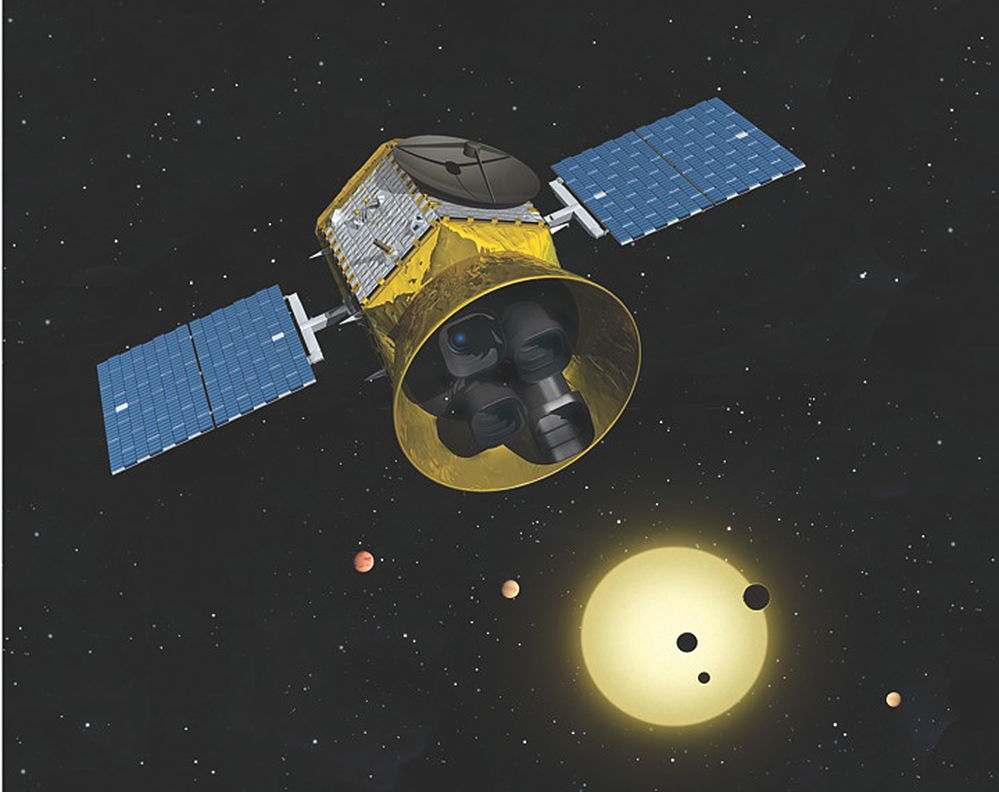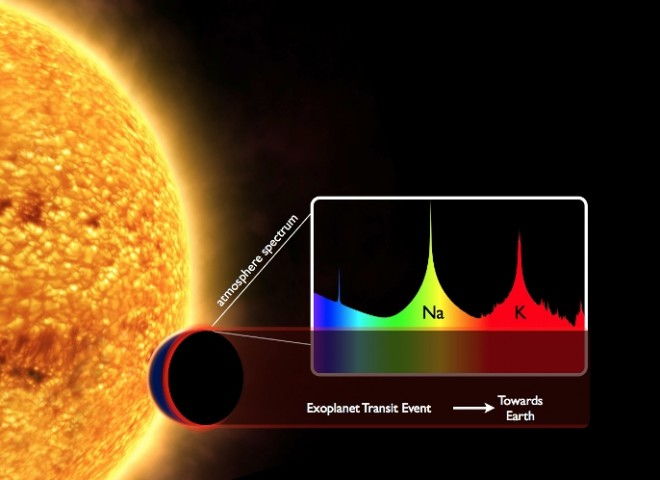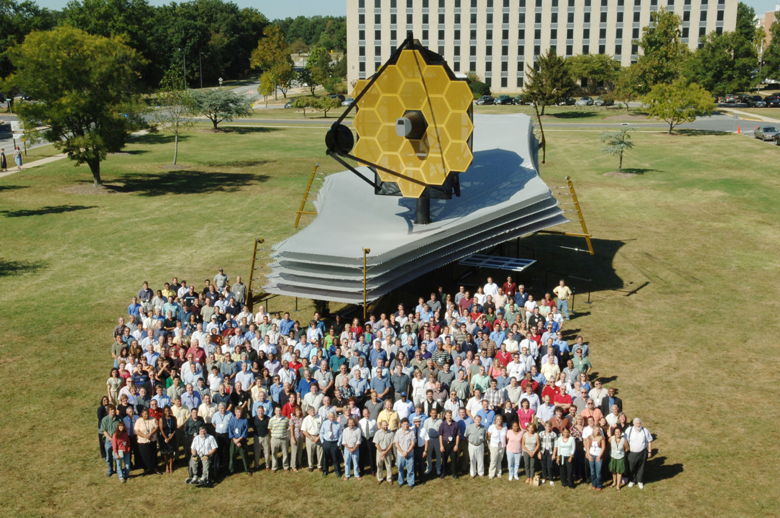
At the 2012 Astrobiology Science Conference, Astrobiology Magazine hosted a plenary session titled: “Expanding the Habitable Zone: The Hunt for Exoplanets Now and Into the Future.”
Originally formulated as part of our “Great Debate” series, this panel of exoplanet hunters and thinkers held a lively discussion about some of the most important issues facing the search for and understanding of alien worlds orbiting far-distant stars.
You can read parts one, two, three, four and five on SPACE.com. Here is Part Six:
David Grinspoon: In the absence of a big breakthrough in this log-jam we seem to be in with trying to get a TPF-type instrument flown, what are the smaller but significant and valuable steps we can take in the nearer future? What can we do with JWST that’s relevant to this question? And what other kinds of smaller but significant missions can we use? Perhaps taking advantage of new technologies that are coming onboard?
Sara Seager: Lets come back to James Webb later.
David Grinspoon: Okay, we'll come back to JWST. But what can we do with other kinds of missions in the meantime? [Photo Tour: Building the James Webb Space Telescope]
Sara Seager: I just want to say that if you actually just even Google, you will find a lot of things that people want to do, building on the current success of exoplanets. And those really fall into the category of finding transiting planets. ExoplanetSAT that I mentioned was one example. We have an intermediate between ExoplanetSAT and Kepler, which is called TESS, Transiting Extra-Solar Planet Survey Satellite, which is also out of MIT led by George Ricker. And the point of these smaller cheaper missions is that the bright stars can use a smaller telescope.
Get the Space.com Newsletter
Breaking space news, the latest updates on rocket launches, skywatching events and more!

So we have those sets of things, and then in parallel we have, building upon the success of observing exoplanet atmospheres through transit transmissions spectroscopy and secondary eclipse-spectroscopy, when the planet goes in front of the star and behind the star, you can look at the combined light and pull out the planet signal. We have, people help me out here. ECHO in Europe being built. There's one here in the U.S.; what's it called again?
Vikki Meadows: FINESSE.
Sara Seager: FINESSE. So, people are really thinking in small things. Those would be on the 1 to 200 million dollar level. This one here we could build our first one for 5 million, copies would be about half million and we probably want a couple of dozen of them to go up there. So actually there's a lot of small things that are happening. And that's what I meant by specialized smaller things going on that are actually more tractable and you can hopefully save by having smaller mass and lower complexity. So that's where things are headed that way. [Planets Large and Small Populate Our Galaxy (Infographic)]
Vikki Meadows: So if I can be Dr. Optimist again. And in defense of the Decadal, Astro 2010 Decadal, there are some steps in there to make some progress early on. And they do call out the fact that we are pushing down technology now in radial velocity surveys to the point where we may find Earth-mass planets around nearby stars. So we start to get our sample. What we really need to do first is try to get a sample of local targets that we would like to characterize. So that first step could potentially be done with radial velocity from the ground. You don't get the size though, which I don't really like because that means we can't get density, but that's one potential step. And then some of those targets could be followed up with JWST if they are found to be transiting. And so JWST could potentially could get us the very first spectrum of a Super-Earth type planet in the habitable zone, but at a huge cost. It turns out we can't do very many with the JWST because we have to share that facility again with other people and they won't let us have the entire telescope for the entire time.
So there are some steps there and they also said that we should start working on technology development for TPF with the goal of having it to be one of the major missions for the 2010 Decadal. So there are some steps in there, but maybe not as fast as we would like.
Eric Ford: And one of those steps was an Explorer-class mission. Sara mentioned TESS and FINESSE and ECHO and other sorts of things in that scale that could be that Exoplanet mission, if we are able to work out the technical and come to an agreement on it. So there is support for it, and I actually agree with Sara that there is an Age where you just buy a bigger X and then you can then do better, and you don't have to think very hard, things are just there to be found. And we're reaching the point where the easy low-hanging fruit are being picked. And we're having to be clever and maybe design special purpose instruments. [The Nearest Stars to Earth (Infographic)]
In particular the Kepler mission is really the first space mission designed from the ground up just to do exoplanet science and not something that was co-opted and used for a different purpose. And the success of Kepler is demonstrating how valuable it can be when you have a specialized mission and whether it be other small satellites or Explorer-class satellites, they are able to find these transiting planets around nearby stars that are bright and capable of many different types of follow-up. I think that everyone likes one really good data point. And having the radial velocity, the transits, the transmission spectroscopy for a small amount of planets, while you would like it for many planets, having a lot of information for a small amount of planets is probably superior to having one measurement of one dimension for a few hundred planets, but not having all of it on a few planets, so we can at say something about some planets.

Dirk Schulze-Makuch: There may actually be coming some help from some kind unexpected direction. I was last October at the 100-year Starship project meeting. Yes, just half a million dollars, but that put in from the Department of Defense from DARPA and NASA Ames to basically put a business entity together that would develop a plan that we can go in a hundred years time period to exoplanets. So there is some kind of interest, which kind of exoplanets would be interesting to go to. Which are close? And how do we characterize them? And you know, they were serious.
Sara Seager: It’s serious, the people at that meeting weren't laughing.
I want to leave something else here with you, it’s a thought about the Decadal. And that is the Decadal before, the one before that we were talking about, barely mentioned exoplanets at all. So exoplanets is a field that really has it own momentum. And when I look around the room here, and I see some of what I call “the first generation astrobiologists,” when they were told what you are doing is fringe, it won't happen, there's not enough money. Do you think those people listened? And so I can assure you that right now even people that I know and things that are happening. People are working hard to invest in technology, to keep technology alive. So that when things ramp up again we'll be ready to build a Terrestrial Planet Finder.
David Grinspoon: I have a couple more questions for the panel on related topics. We sort of put off JWST. But what about JWST? What is the potential for exoplanet observations with that instrument?
Sara Seager: Okay, I'll speak to that one. And I will just say that it is a bit of a disconnect because we're focused on habitability here. But, if we had a different one hour session talking about exoplanet observations today, then the path would be more clear to explain to you. But basically right now a few dozen exoplanet atmospheres have been observed with the Spitzer Space Telescope, with the Hubble Space Telescope, with ground based telescopes. And this has been phenomenal for the field. And what has happened, they are transiting planets, planets that go in front of the star and they go behind the star. And that's mostly what's been observed. Mostly it has been big planets, Jupiter-size planets, or Neptune-size planets in one case. And what we hope to do with the James Webb is to just repeat all this. To use just like we did Hubble and Spitzer, then we hope to use the James Webb, but march down in size a planet. So instead of doing the big planets like Jupiter or Neptunes, we want to go down to Earths. And that's the goal, if the right planets are found around the right targets, meaning a star that's close enough to Earth so we get enough photons, that's what we want to do. [See Amazing Hubble Space Telescope Photos]
And a lot of people make a kind of car.., I won't say career, but they turn out a paper trail, about what you can find with these. And that was the comment that Vikki alluded to, "well this won't be like right now", with Hubble and Spitzer you need maybe one transit, maybe four at most to stack the data to get a signal. So if each transit lasts a few hours, and you need data in transit and out of transit, that's about six hours per object. Let's say you needed four, that's 24 hours. But for the James Webb, you might 100 hours or 500 hours. Or for a really good object, every time it transits you might need to point the James Webb at that object. So this actually is part of that paradigm shift of how you’re going to use your observatory. For the astronomers in the audience who know what the Hubble Deep Field is, that's like a Hubble Deep Field every time you have an interesting planet.

So what we are hoping to do with the James Webb is to look at atmospheres. And we've been lucky before in exoplanets. In fact you can argue that the field is almost built upon, not totally, but nature has given us such a range of objects. We hope to continue to be lucky with these smaller objects, and use the James Webb to find molecules in rocky planet atmospheres. [Gallery: The Smallest Alien Planets]
David Grinspoon: Well, that that would of course be tremendous and would probably help motivate the building of a specialized instrument if you can start to get that kind of result.
Sara Seager: Wait, let me just add one more thing because there is a subtlety here that bypassed a lot of people. And that is the quality of data that we are going to have in the future. And that quality of data, when the James Webb launches, we'll get spectra of the hot Jupiters that will just blow everybody away.
Eric Ford: But they'll still be crummy, compared to what everyone in the room is used to.
Sara Seager: I don't know if that's so fair. It will be pretty good. Yeah, for these rocky ones we'll be lucky if we can identify a molecule. And that will be after a 100, to 200, to 300 hours of data.
David Grinspoon: One last question. We've been focusing, for obvious reasons, on astrophysical or telescopic missions. But of course there is another kind of mission that can help us in our contextualizing and understanding of extra solar planets, and that is solar system missions. Missions, exploration within our own solar system, because it has come up already, there is a lot we still don't know. A lot about the planets close to home that would help us answer some of the questions we need to answer to really get at this more general understanding of planetary science and habitability.
So this could be a whole hour discussion, but Dirk I'm wondering if you could briefly offer some thoughts on sort of what some of the highest priorities might be, not just for planetary exploration in general, but specifically for planetary exploration with this focus of helping us understand exoplanets?
Dirk Schulze-Makuch: Well obviously since this is basically our playground or play yard. It is very close to us, to our planet, and it is very easy to reach. So one of the missions that is about to launch in a few years is MAVEN. So we get a little bit more idea about the atmosphere of Mars. And what is obviously very interesting is also the atmosphere of Titan and how the Titan atmosphere interacts with the surface and possibly with the sub-surface. With regard to exoplanets, obviously what we only can see for the foreseeable future is the atmosphere. So any kind of solar system probe or mission that would be targeted toward understanding the atmosphere, and there's not that many planets in our solar system that actually do have an atmosphere. It's really significantly only Venus, Mars and Titan, which would help to the knowledge and how we can apply it to the exoplanet case.
David Grinspoon: Well, that was a pretty good answer, except you didn't really mention my second favorite planet, Venus.
Dirk Schulze-Makuch: I just mentioned it.
David Grinspoon: Well, you mentioned it in passing.
Dirk Schulze-Makuch: Okay, alright, sorry about that.
David Grinspoon: But as far as really understanding what makes Earth-size planets tick, obviously we have a lot more exploration to do very close to home.
You can watch the full "Great Exoplanet Debate" here: https://connect.arc.nasa.gov/p68qflmgnhk/?launcher=false&fcsContent=true&pbMode=normal
This story was provided by Astrobiology Magazine, a web-based publication sponsored by the NASA astrobiology program.
Join our Space Forums to keep talking space on the latest missions, night sky and more! And if you have a news tip, correction or comment, let us know at: community@space.com.

Space.com is the premier source of space exploration, innovation and astronomy news, chronicling (and celebrating) humanity's ongoing expansion across the final frontier. Originally founded in 1999, Space.com is, and always has been, the passion of writers and editors who are space fans and also trained journalists. Our current news team consists of Editor-in-Chief Tariq Malik; Editor Hanneke Weitering, Senior Space Writer Mike Wall; Senior Writer Meghan Bartels; Senior Writer Chelsea Gohd, Senior Writer Tereza Pultarova and Staff Writer Alexander Cox, focusing on e-commerce. Senior Producer Steve Spaleta oversees our space videos, with Diana Whitcroft as our Social Media Editor.









